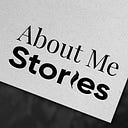LIFE LESSONS
One Big Web: A Few Ways the World Works
Figuring Out How The World Works And Aligning With Those Realities
Joseph Tussman, a UC Berkeley philosophy professor, wrote in the 1960s that-
“What the pupil must learn, if he learns anything, is that the world will do most of the work for you, provided you cooperate with it by identifying how it really works and aligning with those realities.”
What could be more obvious than that? Figure out how the world works and align with those realities.
And here’s an obvious trick:
The best way to learn how the world works is to realize how connected everything is. The big lessons from one field can often teach you something critical about other fields.
We’re usually taught as if math is math and chemistry is chemistry, with each field siloed off in its own department, focused on its own truths.
But learning of that sort is only useful in academia. The real world has no silos.
The big learning comes when you connect the dots from one field to the next. And once you do so, you realize those connections are infinite. It’s all just one big web. A big web of how the world works.
Let me give you one example. It’s a story about kittens.
Two MIT cognitive scientists interested in how cats learn to walk once showed something: The difference between firsthand experience and secondhand learning.
The scientists raised kittens in total darkness. Once the cats were old enough to walk, they were placed in a lighted box for three hours a day.
In the box was a kind of carousel, with each kitten placed in a harness.
One of the cat’s legs reached the floor, and it’s walking movements made the carousel move in a circle.
The other cat’s legs were restrained by the harness. It could see everything going on — the movement, the other cat walking around in circles — but its legs never touched the floor. It had no active control over the carousel.
After eight weeks of daily carousel walks the cats were brought into the real world to test what they had learned.
They were tested to see if they would automatically place their paws on a surface they were about to be set down on. And if they’d avoid a steep ledge, walking around to a gradual ramp instead. And whether they’d blink when an object was quickly brought close to their face.
The results were extraordinary.
100% of the cats whose legs had control over the carousel’s movements tested normal.
The cats who only watched, but never controlled, the carousel were functionally blind.
They fell off ledges. They didn’t put their paws out to land on a surface. They didn’t blink when an object accelerated toward their face.
It wasn’t that they couldn’t operate their bodies — they learned to do that in the dark room they were raised in.
But they couldn’t associate visual objects with what their bodies were supposed to do.
The two cats grew up seeing the same thing. But one experienced the real world while the other merely saw it. The result was that one mastered a topic; the other was effectively blind.
And don’t a lot of things work like that — with humans too, not just cats?
Nothing is more persuasive than what you’ve experienced firsthand. You can read about what it was like to have certain experiences — living through the Great Depression, fighting in World War II, or growing up in poverty. You can try to be open-minded and empathetic to those experiences.
But what about the people who actually experienced those things firsthand? They understand details that those who merely read about their experiences don’t, and never will. They will have opinions, skills, and emotions that outsiders can’t comprehend.
It’s just like the cats.
And it helps explain why people disagree about everything from politics to religion to investing to education.
The question, “Why don’t you agree with me?” can have infinite answers.
But usually a better question is, “What have you experienced that I haven’t that makes you believe what you do? And would I think about the world like you do if I experienced what you have?”
That is such a broader question than asking, “How do cats learn to walk?” But I’ve never encountered a more potent example of the difference between experience and secondhand learning than the kitten study.
It might sound crazy, but once you understand the basic principles of your profession, you might gain more expertise by reading around your field than within your field.
Connecting dots between fields helps you uncover the most powerful forces that guide how the world works, which can be so much more important than a little new detail that’s specific to your profession.
And I’m telling you: The more you look, the more you start to see these connections everywhere. They are endless.
John Muir once said “When we try to pick out anything by itself we find it hitched to everything else in the universe.”
Here are a few more examples from one field that teach something much broader.
Founder Effect (genetics): Genetic variability collapses when a small group becomes separated from the larger population, often leading to a proliferation of harmful traits and the inability to adapt. Variance equals strength in evolution, because the more diverse a population is the more chances it has to come up with new traits that can be selected for. The same thing applies to countries, industries, and businesses: bad ideas tend to stick around in the absence of variety.
Allelopathy (ecology): Some plants produce chemicals that kill other plants around them, eliminating competition for resources. When trying to make sense of why humans can be ruthless and greedy, it helps to watch a brainless, thoughtless, emotionless plant ruthlessly destroy everything around it. Nature is ruthless and greedy.
Zipf’s Law (linguistics):
There is a heavy power law distribution in the words people use, with the most common word (“the”) being used twice as often as the second-most-common word (“of”), which is used twice as often as the third-most-common word, (“and”), etc. There are something like 180,000 English words, but fewer than 200 make up half of the words people speak and write. So even in a massively diversified set, a tiny handful of things make up the majority of occurrences. It’s the same in business and investing — tails drive everything, and it’s easy to underestimate how important just a few companies, a few investing periods, and a few products are to your long-term success.
Lots of things work like that. Take brands, relationships, and reputation. There are things that, once lost, will likely never be regained, because the chain of events that created them in the first place can’t be replicated. If you realized how valuable those things are you’d be more careful about risking their loss.
Look around and you’ll find hundreds of these ideas, linking one field to another. It’s more fun than confining yourself to your own field, and it gets you closer to the truth. When you align with them, it’s just like Tussman said: the world will do most of the work for you
#MorePowerToAllofUs
A clap and or a kind comment here is much appreciated.
Enjoyed reading this? Follow me on Medium: Mohit Chawla or get my publications directly in your inbox by subscribing here
Want to support my work? You can Buy Me a Coffee ☕ Proceeds go to CHARITY!
Here’s my blog covering all-things-finance: FinanceBroIndia
P.S. I have recently started writing on Medium about- all things finance, and life, and to assist people in their path to financial independence. If I can guide some (or any) of the members in this endeavour, then I shall consider this “Medium” exercise as successful!

